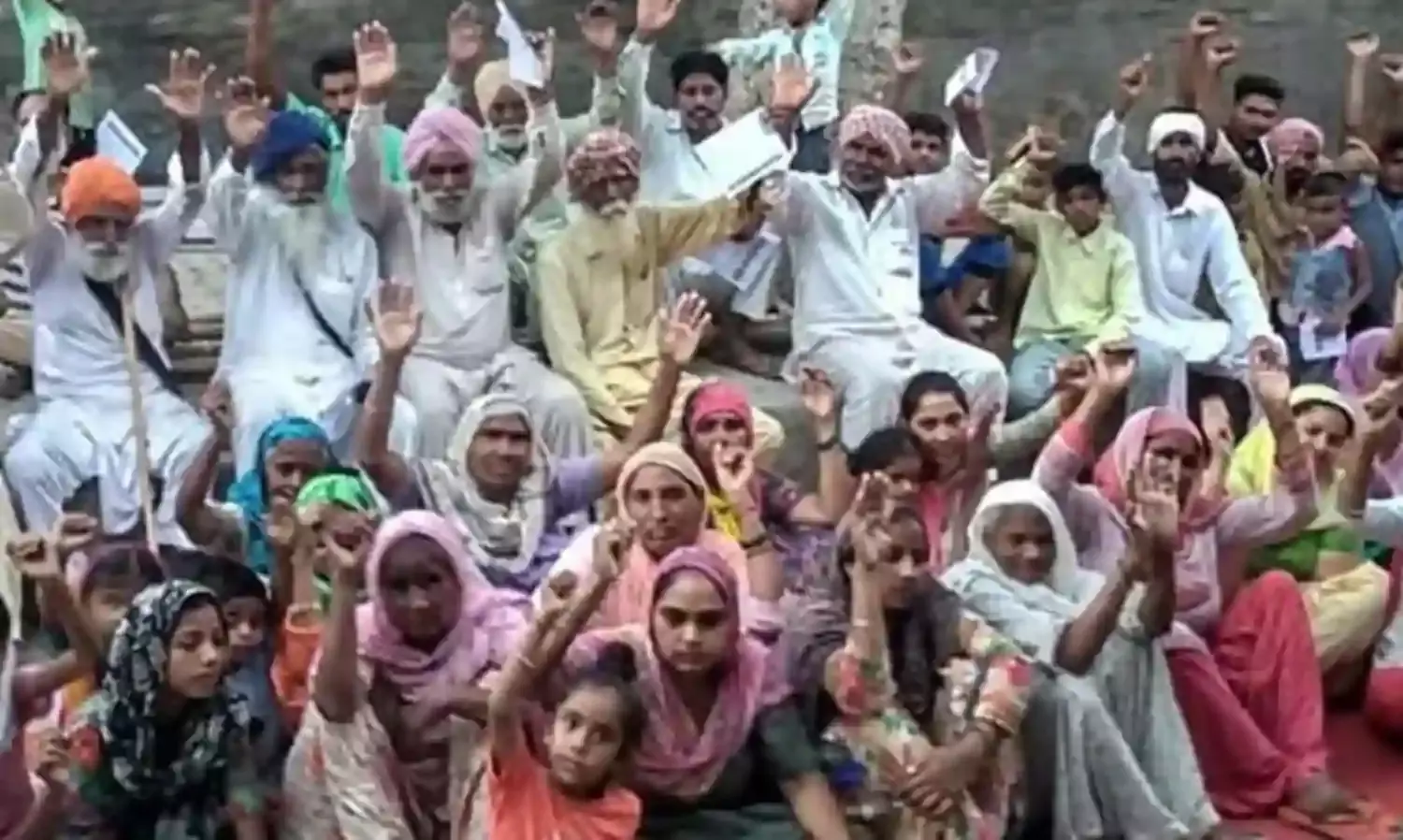Punjab Dalits Embrace 'Ravan Rajya', Campaign Against Burning His Effigies
Campaign against burning Ravan effigies picks up pace

CHANDIGARH: Dalits in Punjab, mainly Valmikis, have taken a diametrically opposite position to the very concept of ‘Ram Rajya’ and are promoting a ‘Ravan Rajya’ instead - an act that is being seen as embracing the Dravidian identity.
They are seeking a ban on the burning of effigies of Ravan, Meghnad and Kumbhkarna on Dussehra.
In the districts of Doaba like Jalandhar, Kapurthala, and Phagwara as well as the other Dalit dominated district of Ferozepur, it has become increasingly common for Dalit families to use the names of Ravan’s family and his mythological soldiers as surnames.
Names such as Lankesh, Chandaalia, Shambuk, Meghnad and Kumbhkarna are gaining popularity. Women are preferring to use names such as Lankeshwari, Kaikesi, Nikasha and Keshini, the latter three being synonyms of the name of Ravan’s mother.
Observers say that although the trend began several years ago with a small number of people keeping such surnames, it has picked up after last year’s Supreme Court order on the Scheduled Castes and Scheduled Tribes (Prevention of Atrocities) Act, which many saw as diluting its provisions. The government was compelled to bring an amendment to the Act in August bypassing the judgement after massive protests.
“We see the burning of these effigies on Dussehra as an insult to Mahatma Ravan. The Dalits and Dravidians have been painted black over the centuries. For us there are only two categories, of Arya and Anarya. After the Aryan invasion the other was pushed to the margins,” said Lakhbir Lankesh, who is president of the Ravan Sena Bharat (Ravan’s Army India) and works mainly in the Jalandhar-Kapurthala area.
Lankesh points out that there is no place for Dalits and other minorities in the idea of Ram Rajya conceived by the BJP and other Sangh Parivar affiliates, pointing to the razing of temples of Sant Ravidas and Sant Valmiki at several places including Delhi and Kolkata.
Deepak Bodh, who says he is a ‘dharam pracharak’ taking forward the ideology of Mahatma Ravan, believes that Ravan has been systematically misrepresented over the centuries. “We get proof on reading the Valmiki Ramayana, where he refers to Ravan as a Mahatma on 14 occasions while Ram is referred to simply as Raja Ram.”
“According to the epic, Sita coming out pure in her agni pariksha (trial by fire) is itself proof that Ravan turned out to be true. There are also other references, that no male was allowed to enter the Ashok Vatika where Sita had been kept and Ravan himself sought permission to seek an audience with her from her guard Trijata,” Bodh said.
“We have nothing against Ram. All that we want is that effigies of Ravan should not be burnt as it hurts our sentiments,” he added.
Bodh is scathing in his criticism of the Sangh Parivar. “Everyone knows what the RSS and their affiliates stand for. What kind of a Ram Rajya do they refer to when we are witnessing the rape of children on a daily basis? There is no end to atrocities on Dalits and other marginalised sections of society. We would rather have a Ravan Rajya, where everyone is equal and has the freedom to speak and do what he or she wants.”
For him both Ravan and Dr B.R.Ambedkar are progressive icons for Dalits.
Professor Ronki Ram, who is an authority on Dalit issues in Punjab, says the idea behind Dalits identifying with Ravan shows their search for an icon marker for their identity. “Valmikis are the largest in terms of numbers of the 39 Scheduled Castes in Punjab. They seem to be trying to look out for a more direct, strong marker of their identity. Despite being a little more in number than the Ad Dharmis or Chamars, the Valmikis and Mazbi Sikhs are politically not organised and have been striving for a distinct identity.”
The Ad Dharm movement started in Punjab in the 1920s on the lines of the Adi Dravida movement in Tamil Nadu. Experts believe that the Ad Dharmis and Chamars have been upwardly mobile, with many of them having migrated abroad.
Ram points out that reservation benefits have been bifurcated between Valmiki-Mazbis and Ad-Dharmis-Chamars. These four castes constitute an overwhelming chunk of Dalits in Punjab. The state has the highest proportion of Dalits in the country, at around 32% of the total electorate.
Ram further told The Citizen that the Valmiki leadership is apprehensive of being sucked into the Hindu fold. “By putting up this challenge, they are also resisting the larger Hindu identity,” he said.
He points to the time when the Bahujan Samaj Party’s fortunes were on the upswing in Punjab in the nineties, when one of the most prominent slogans was ‘Hamara Ram Kanshi Ram’ (Our Ram is Kanshi Ram).
At the same time, he feels that the Valmikis’ stance of trying to identify with Ravan is self-destructive, as it puts them on the path of conflict with caste Hindus.
Meanwhile, on the demand seeking a ban on burning effigies of Ravan, Meghnad and Kumbhkarna, the Dalits involved in the campaign are now moving from village to village to drum up support. They plan to set multiple units that will hand over a memorandum of demands to the state government through the various district administrations.
Even in the past there have been reports of a section of Dalits issuing appeals to the people not to burn effigies of Ravan and his clan. There have also been reports of their organising Ravan Pujas at some places in the state.



